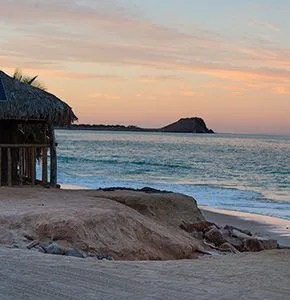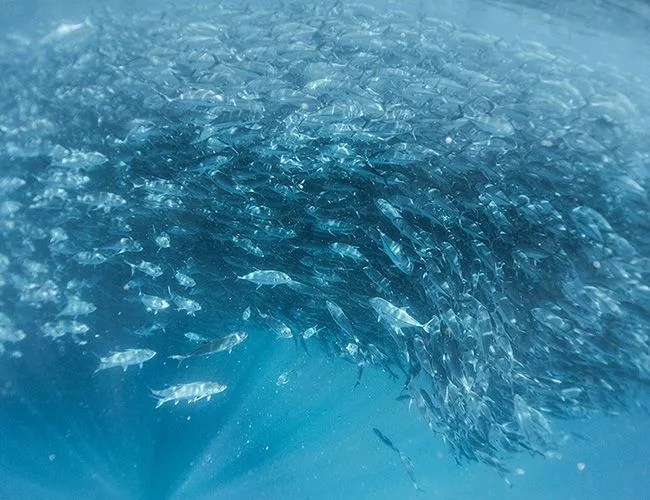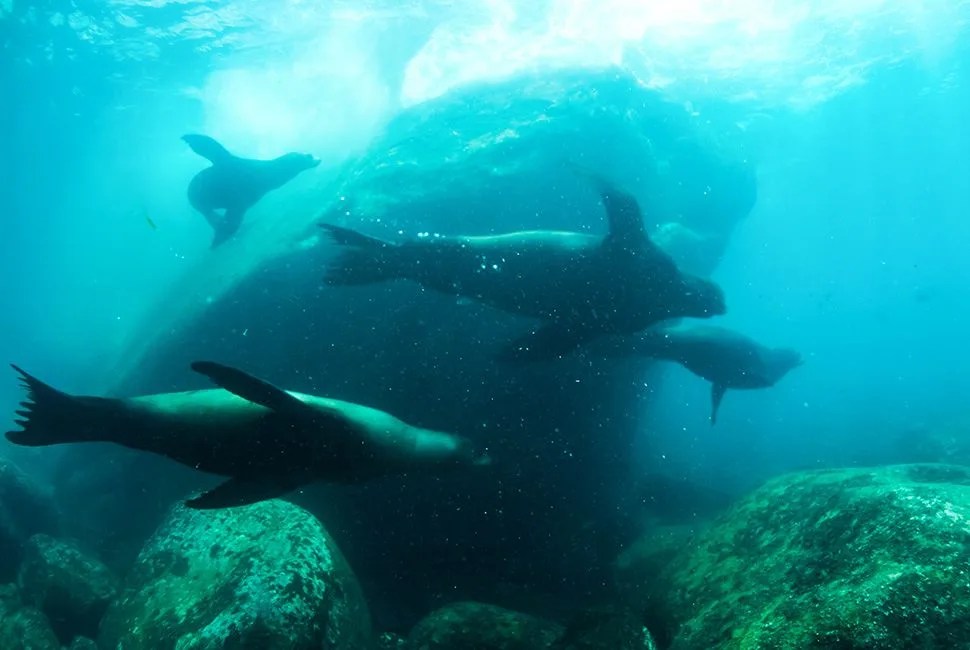10 photos
“Make sure your rental car has an inflated spare tire and a working jack,” said the email from the owner of our rented casa, “and be sure you get to Cabo Pulmo before dark.” I was thinking about these words as we raced the sunset, the little Nissan’s air conditioning struggling to keep up in the 90-degree heat. Mexico’s Transpeninsular Highway slices north from Cabo San Lucas to La Paz and beyond, much of it through a desert landscape that is both beautiful and ominous. About an hour outside of San Jose, a road sign caught my eye — Tropico de Cancer. Even though my Spanish is limited to Mexican restaurant menus, I immediately knew we were crossing the northernmost latitude where the sun travels directly overhead on the summer solstice. June 21 was still a month away but it was still damn hot. I swerved to avoid a roadrunner and mashed the gas pedal.
The Sea of Cortez was formed five million years ago when tectonic plates tore apart, allowing the Pacific Ocean to flood in some 700 miles. The resulting Baja Peninsula is a land of contrasts. Rugged mountains and cactus-studded desert sands drop right into the ocean. Hermit crabs skitter along fossilized coral below towering sand dunes that hide scorpions, and huge turkey vultures compete for air space with pelicans and frigates. Just offshore, humpback whales and manta rays cruise by on annual migration routes and sea lions hunt the shoals of jacks and mackerel. An hour and a half north of the tourist mecca of Cabo San Lucas, at the end of a 10-mile washboard dirt road on a quiet bay ringed by rocky peaks, lies Cabo Pulmo.
The two Cabos couldn’t be more different. Cabo Pulmo is a tiny town with a population of 250, give or take a gringo expat, and there isn’t a condo to be found there. Or air conditioning. That’s not to say you couldn’t have air conditioning, but since all electricity comes from solar panels, most residents there choose to use it for more important things, like lights. At night, the sand streets of town are inky dark and we used headlamps to navigate, watching out for scorpions and tarantulas. Despite the heat of midday, at night, the dry desert air cools quickly, aided by a sea breeze, and made for comfortable sleeping. But during the day, the best way to stay cool was to go underwater, which was perfect since we were there to scuba dive.
IF YOU GO
 SWIMPRUF
SWIMPRUFGet There











